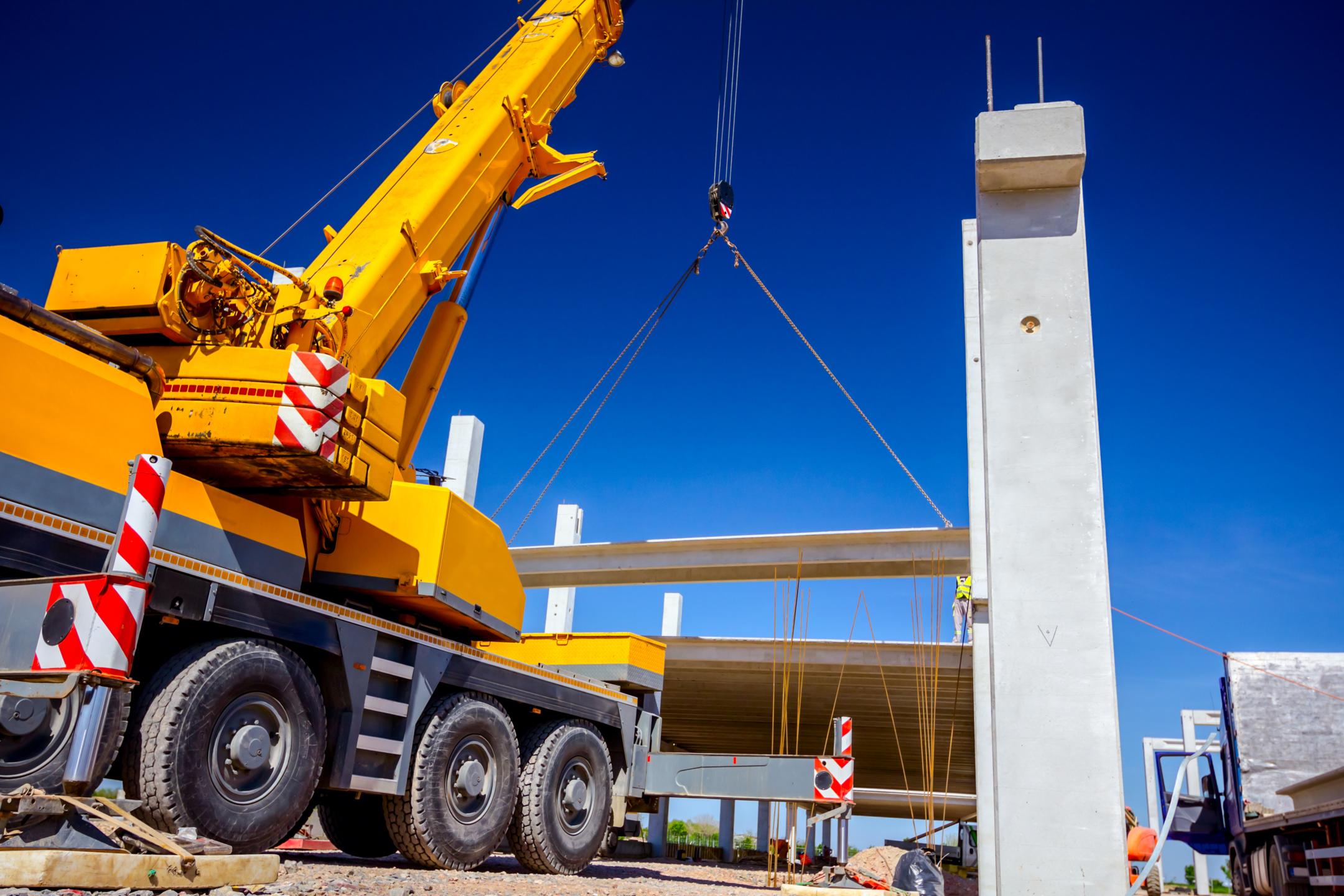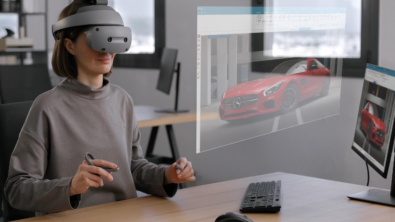The Digital Future of the Heavy Equipment and Off-Highway Industry – Transcript – Part 2

On the Industry Forward Podcast, Dale and I spoke with Hendrik Lange, Director of the Heavy Equipment Industry at Siemens Digital Industries Software, about the challenges facing manufacturers of tractors, construction equipment, and more. We also discuss some of the ways the digitalization is making its way into the design, manufacturing, and maintenance of modern equipment.
You can listen to part 2 of the podcast and read the transcript below.
Conor Peick: Hello and welcome back to the Industry Forward Podcast with Dale Tutt. My name is Conor Peick. In this episode, we’re bringing you Part 2 of the discussion that Dale and I had with Hendrik Lange, the VP of Heavy Equipment and Off-Highway Industries at Siemens Digital Industries Software. We continue our survey of the latest developments in the heavy equipment and off-highway industries as we dive into electrification, autonomous equipment, and the unique challenges of applying these technologies in vehicles that must operate for long hours in extremely challenging conditions. So please sit back and enjoy the episode.
Dale Tutt: Another thing that’s really top of mind for a lot of our industries right now is sustainability. It’s become a key concern for almost every industry out there. How do you see that manifesting itself in agricultural machinery? Are you seeing electrification making headway in a similar fashion to what we see in automotive industries? How do the constraints of a farm affect the approach to sustainability versus what we see with other industries like aerospace, where they’re electrifying air taxis, or in the automotive industry, where you see a lot of movement towards electric vehicles or plug-in hybrids?
Hendrik Lange: That’s a good point. In general, this is a huge topic. For many farmers, reducing or eliminating soil tillage has become a priority. Our agricultural OEMs respond with a new generation of equipment that doesn’t rely on inversion. Minimum tillage and direct drilling are now commonplace on farms around the world. The aim is to place the seed directly in the residues of the previous crop with minimal soil disruption. Such practices contribute to sustainability and reduced environmental impact. When plowing practices are abandoned or limited, farmers no longer need high-power tractors. Smaller, leaner models can operate lighter machinery, enabling the development of new power technologies. More efficient internal combustion engines, alternative fuels like LNG, methane, or hydrogen, and reducing tractors’ average power demand can help with electrical power development. Changing agricultural approaches can reduce the demand for high-power machines and help with precision spraying, reducing pesticides without compromising efficiency, food security, or safety. Addressing sustainability and new ways of agriculture, like precision farming, leads to new, more sustainable products. Heavy equipment with a lifespan of 20 or 30 years needs newer technologies with fewer emissions to make a significant impact. Farmers look at the total cost of ownership, and sustainability is a huge aspect. Heavy equipment customers must consider new machines and technologies, embracing alternative propulsion systems.
Dale Tutt: You made some great points and distinguished the differences about sustainability in agriculture and heavy equipment. In automotive or aerospace, the focus is on carbon emissions and electrification of propulsion systems. In your industry, sustainability involves minimizing environmental impact because heavy equipment and agriculture interact with and change the environment. This distinction is important and shows how new business models and technology help companies address sustainability in vehicle operation and environmental interaction.
Conor Peick: Definitely, I agree, Dale. It was fascinating to hear about how agriculture looks at sustainability from many perspectives. Moving on to another technology that’s prominent in the public consciousness: autonomy. Hendrik, you touched on this earlier, but I want to revisit it. Is self-driving or autonomous operation something that heavy equipment and agricultural OEMs are looking at for the future? Are their customers interested in it?
Hendrik Lange: Conor, right question. Autonomy and autonomous systems have been a topic for agriculture for more than 25 years, starting with GPS systems. We have the advantage of a controlled environment, which helps with safer and more precise operations. Autonomous or semi-autonomous vehicles can help address higher efficiency and sustainability because they are more accurate than even the most experienced tractor driver. Smart vehicles using sensors, field maps, and machine learning can deliver repeatable actions with greater accuracy. Autonomous machines support the idea of farming as a service, embracing technology like artificial intelligence, cloud computing, and robotics. In the future, every field will be digitized and mapped out, with robots permanently placed on farms for tasks like feeding, weeding, and spraying. This helps with safety, efficiency, and high levels of crop care and production. Farmers can benefit from this as a service, meeting requirements for good practices and management of soils, water, and landscapes. Autonomous systems play a huge role in sustainable agriculture without losing efficiency or profitability. Heavy equipment manufacturers invest in designing and producing autonomous machines, but the challenge is bigger than for automotive companies because it’s not just driving; it’s self-determined operations and robotics.
Dale Tutt: It’s interesting to hear about the role autonomy can play in future farming. One of the challenges many farmers face is the weather. Autonomous operations could theoretically go 24 hours a day, giving farmers more flexibility to manage their business models and take advantage of available times to operate in the field. Autonomy can change the business model of agriculture. Let’s stick with autonomous farming equipment a bit longer. What are the challenges of automating farming equipment compared to operating automobiles on busy city streets? Are there other hurdles to overcome, like accommodating people or animals in the field? Does the business side of heavy equipment help or hinder the development of autonomous systems?
Hendrik Lange: Good question. In agriculture, we have the advantage of a controlled environment, which is different from automotive. It’s not just autonomous driving; it’s also self-determined task actuation, driving plus robotics. We operate in a harsh environment, and sensors are needed to deal with challenges like dust. Today’s sensors can handle this, but the underlying models may not recognize all scenarios. Many sensors used in heavy equipment are initially developed for automotive or aerospace industries, and their models may not address the specific needs of heavy equipment. This is a challenge for heavy equipment manufacturers, especially in agriculture, where demand is not as high as in the automotive industry. Nevertheless, there are many activities to automate and simplify operations. The idea is to minimize the need for skilled labor and guarantee safe automation. Hope that makes sense and illustrates the differences from the automotive industry.
Dale Tutt: That makes a lot of sense. Even though it’s a controlled environment, there are still many variables. Every industry has its own set of challenges, and many solutions involve similar engineering, modeling, and simulation challenges. Very interesting discussion.
Siemens Digital Industries Software helps organizations of all sizes digitally transform using software, hardware and services from the Siemens Xcelerator business platform. Siemens’ software and the comprehensive digital twin enable companies to optimize their design, engineering and manufacturing processes to turn today’s ideas into the sustainable products of the future. From chips to entire systems, from product to process, across all industries. Siemens Digital Industries Software – Accelerating transformation.


